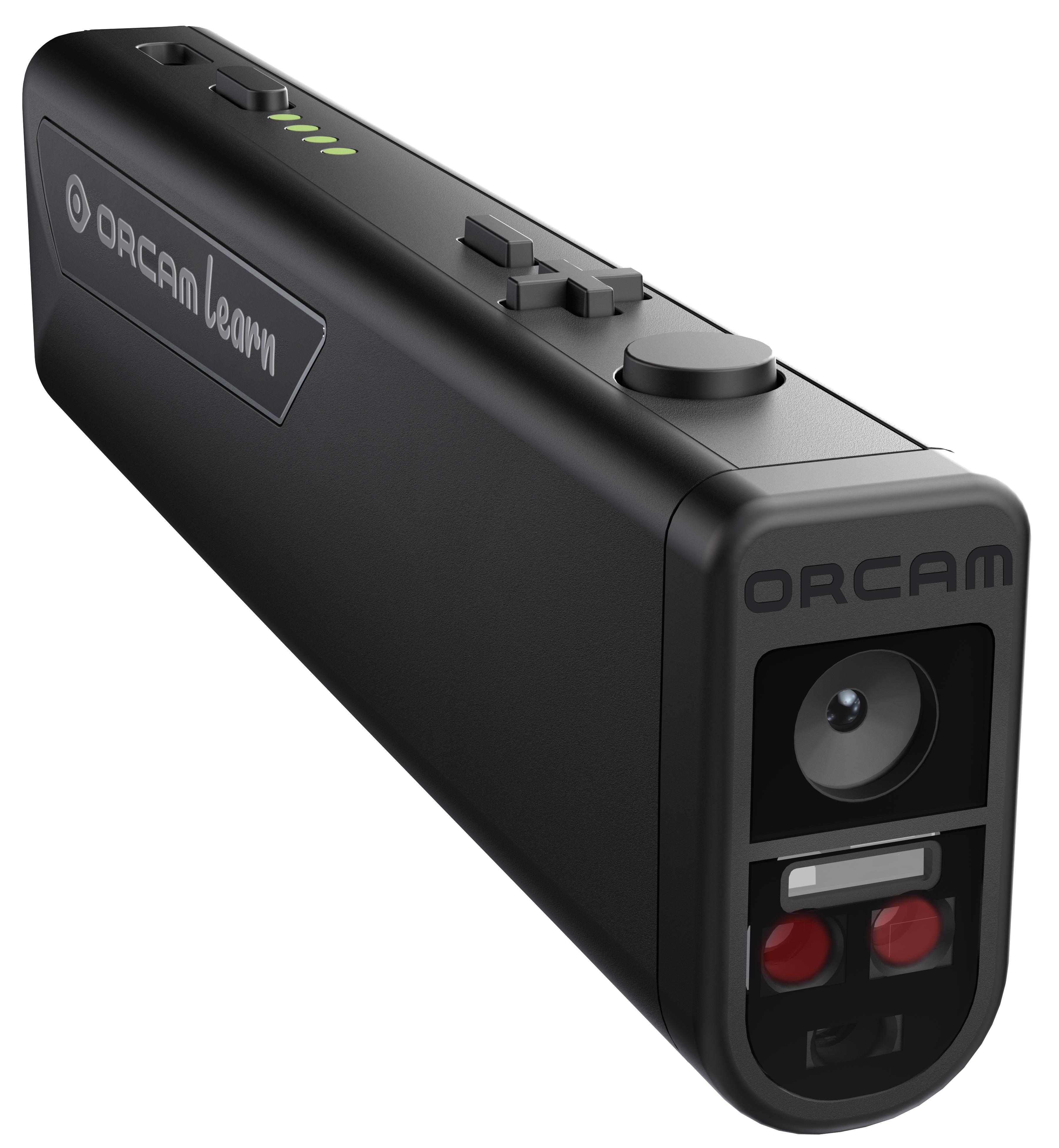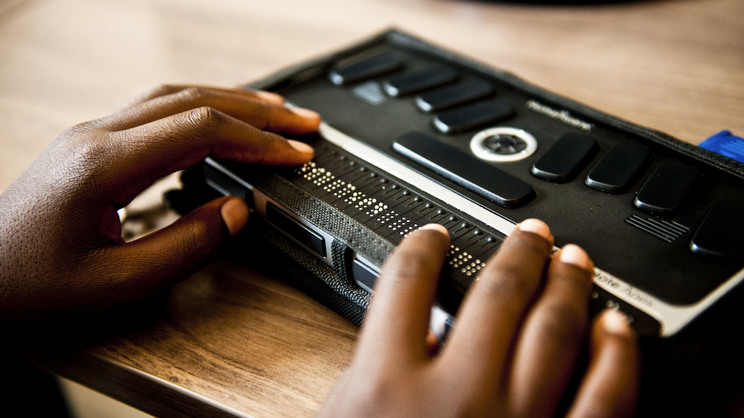OCR Devices for the Blind: Converting Print to Speech in Real-Time
OCR Devices for the Blind: Converting Print to Speech in Real-Time
Blog Article
Empowering Self-reliance With Assistive Modern Technology for the Blind
The combination of assistive technology into the lives of people with aesthetic disabilities represents a considerable advancement in promoting freedom and self-sufficiency. From cutting-edge screen visitors to sophisticated wise walking canes, these devices not just improve daily navigating and interaction but likewise equip individuals to involve meaningfully in numerous aspects of life. As we discover the myriad benefits and real-world applications of these modern technologies, it becomes essential to take a look at the underlying factors that add to their efficiency and the potential for future advancements in this crucial field.
Summary of Assistive Technology

The growth of assistive innovation is grounded in principles of inclusivity and empowerment. Innovations in software, equipment, and sensory enhancements give users with options customized to their particular needs. From display visitors that transform text to speech, to tactile tools that communicate info via touch, these tools transform the way people engage with their surroundings.
In enhancement to sensible applications, assistive technology fosters better social inclusion and participation in numerous industries, consisting of education and employment (OCR devices for the blind). As research and advancement continue to evolve, the capacity for assistive modern technology to even more boost the lives of aesthetically impaired individuals continues to be promising, paving the means for an extra equitable society where every person can flourish
Types of Assistive Devices
A variety of assistive tools have arised to sustain people with aesthetic disabilities, each created to satisfy particular demands and improve daily performance. These tools vary from low-tech solutions to sophisticated innovations, providing varied alternatives for users.
Low-tech devices include magnifiers and large-print materials that help in reading and writing. Braille tools, such as Braille stylus pens and slates, enable responsive analysis and communication. Orientation and movement help, like white walking canes, help users navigate their environment safely.
On the higher end of the spectrum, electronic magnifying systems and screen readers provide significant assistance. Electronic magnifiers allow individuals to enlarge text and pictures on displays, while display viewers transform electronic content into synthesized speech, helping with accessibility to information on computers and mobile phones.
Mobile phone applications likewise play a crucial role, providing functions like message recognition and navigation assistance. Wearable innovation, such as smart glasses geared up with enhanced truth, is becoming a promising device to improve situational recognition.
Benefits of Assistive Modern Technology
The combination of assistive technology considerably improves the quality of life for people with aesthetic disabilities. These innovations empower users by advertising self-reliance, allowing them to navigate their atmospheres much more efficiently and do day-to-day tasks with better simplicity. Display visitors and magnifying software application permit individuals to access electronic information, fostering professional and educational chances that may have formerly been out of reach.
Furthermore, assistive gadgets such as clever walking canes and GPS applications provide real-time navigating help, boosting wheelchair and security. This enhanced autonomy not just boosts self-worth however also encourages social involvement, enabling customers to participate more totally in their neighborhoods.
Assistive innovation additionally helps with communication, helping users attach with others through voice acknowledgment and text-to-speech applications. This ability is crucial for maintaining partnerships and accessing critical details.
Furthermore, the personalization alternatives offered with lots of assistive technologies guarantee that customers can customize tools to their particular demands, additionally boosting functionality and performance. On the whole, the benefits of assistive innovation for people with visual impairments are extensive, advertising a more inclusive society where everybody can seek their goals and goals.
Study and Success Stories
Highlighting the transformative influence of assistive innovation, countless study highlight exactly how individuals with aesthetic problems have actually efficiently integrated these devices into their daily lives. One engaging example involves an university student who used screen analysis software to browse scholastic materials and on-line resources successfully. This technology not just facilitated her education however additionally improved her self-confidence in joining discussions and team tasks.
One more instance research study features a professional who employs a mobile phone application created for navigating and things recognition. By utilizing this application, he has gained back freedom in both his individual and job settings, permitting him to commute individually and engage with colleagues a lot more successfully.
Additionally, a retiree shared her experience with braille e-readers, which enabled her to access a large range of literary works and remain gotten in touch with her area with book clubs.
These success tales underscore the vital duty of assistive innovation in promoting freedom, boosting lifestyle, and promoting social assimilation for people with aesthetic disabilities (Smart glasses for the visually impaired). By welcoming these innovative devices, customers can get rid of difficulties and seize chances that add to their personal and professional gratification

Future Trends in Assistive Innovation
Development in assistive modern technology is positioned to redefine the landscape of support for individuals with aesthetic impairments. Emerging trends highlight the combination of expert system (AI) and artificial intelligence, which boost the performance of gadgets that help with navigating and information accessibility. AI-driven applications are currently capable of analyzing visual information in real-time, allowing customers to involve with their environment more individually.
Additionally, the growth of wearable innovation is progressing quickly. Smart glasses furnished with augmented fact (AR) can give audio descriptions of surroundings, transforming just how users connect with public spaces. These tools not just promote autonomy but additionally foster social addition.
In Addition, the Web of More about the author Points (IoT) is making homes smarter, permitting smooth connectivity between assistive devices and everyday home appliances. This connectivity empowers individuals by enabling automated feedbacks and voice-activated controls tailored to private demands.
Conclusion
In conclusion, assistive modern technology plays a pivotal function in encouraging people with visual impairments by boosting their freedom and engagement with their environments. The diverse series of applications and gadgets readily available not only helps with navigation and interaction my blog however additionally advertises social assimilation and opportunities for personal and expert development. As advancements proceed in this field, the possibility for improving the top quality of life for those with aesthetic problems will certainly increase, fostering higher autonomy and empowerment.

Report this page